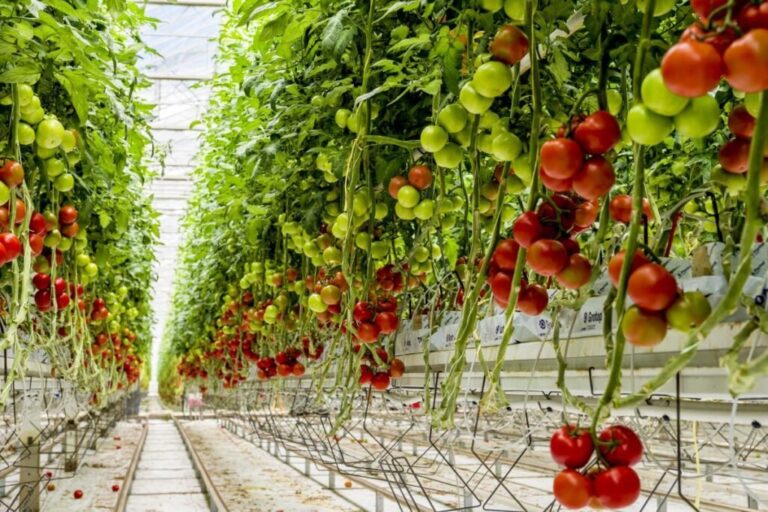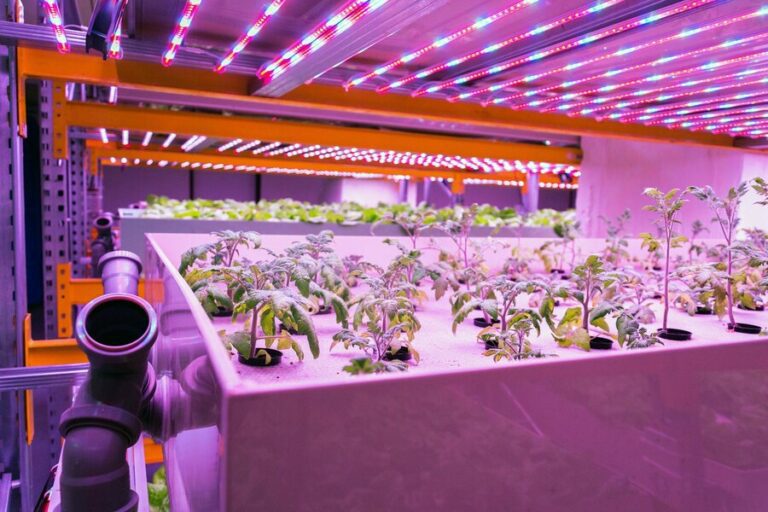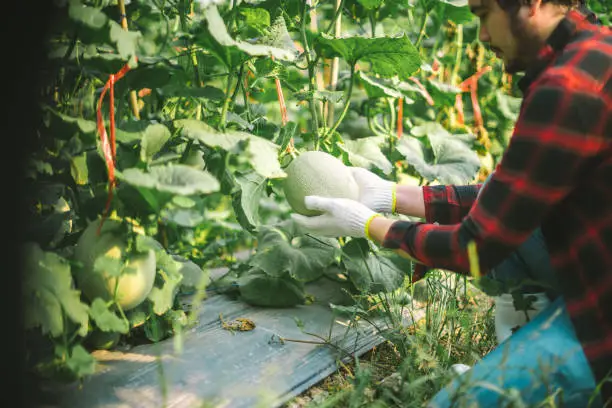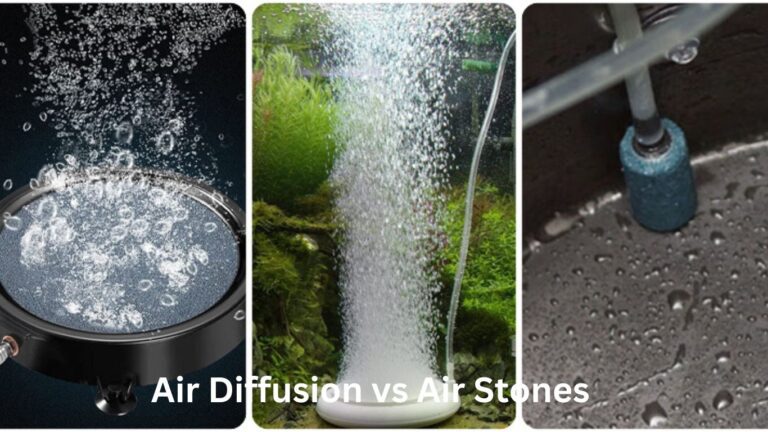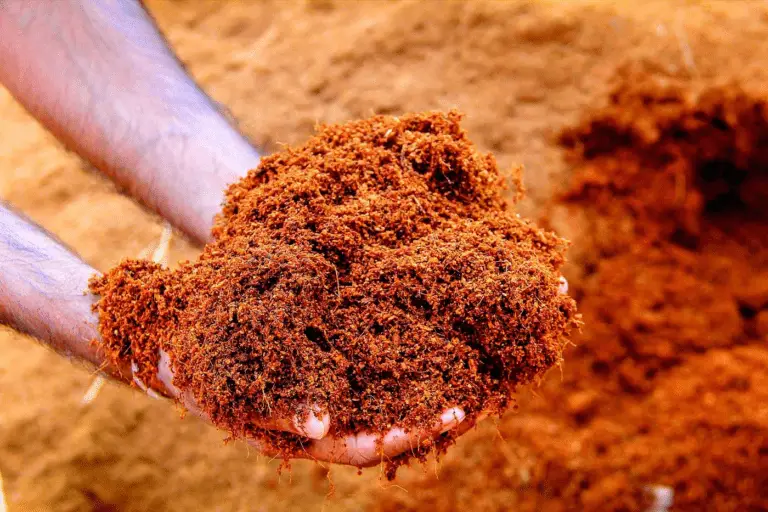Summer Squash Cultivation: The Best Way to Grow It Hydroponically
Summer Squash Cultivation: Table of Contents
Summer Squash Cultivation: Harvesting and Storing
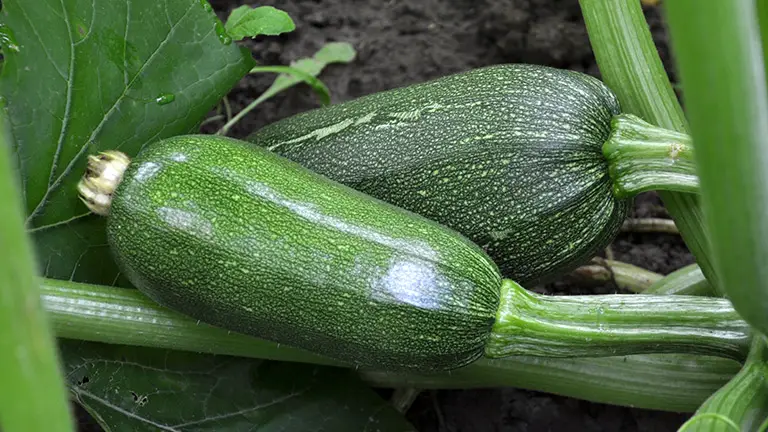
Summer squash, including varieties like zucchini and yellow squash, is a popular and easy-to-grow vegetable. Harvesting and storing summer squash properly ensures that you enjoy the best flavor and texture. Here’s a guide to help you with the process:
Summer squash cultivation involves careful attention to harvesting and storing to ensure the best quality produce. When cultivating summer squash, it’s essential to pick the squash at the right size, typically when they reach 6 to 8 inches in length for optimal tenderness and flavor. Harvesting should be done regularly to encourage continuous production and prevent overripening. Using a sharp knife or pruning shears, cut the squash from the plant, leaving a short stem attached. After harvesting, proper storage is key to preserving freshness. Store unwashed squash in the refrigerator’s crisper drawer in a perforated plastic bag to maintain humidity while allowing for ventilation.
Harvesting Summer Squash:
Harvesting summer squash is a straightforward process, and the key is to pick the squash at the right stage for optimal taste and texture. Here’s a step-by-step guide on how to harvest summer squash:
Harvesting summer squash is a rewarding and essential aspect of home gardening. The key to a successful harvest lies in choosing the right size for optimum flavor and tenderness. Typically, summer squash, such as zucchini and yellow squash, is best harvested when young, around 6 to 8 inches in length. Regular and timely harvesting is crucial, encouraging the plant to continue producing an abundant supply throughout the growing season. Using a sharp knife or pruning shears, cut the squash from the plant, leaving a short stem attached. This method ensures the preservation of the plant’s vitality and promotes a continuous yield.
Choose the Right Size For Summer Squash:
- Harvest summer squash when they are young and tender. The ideal size for harvesting is typically when the squash reaches about 6 to 8 inches in length. At this stage, the skin is still tender, and the seeds are small.
- Selecting the right size when harvesting summer squash is essential to ensure a delightful culinary experience. Optimal harvest size typically falls within the range of 6 to 8 inches in length for varieties like zucchini and yellow squash. Harvesting at this stage ensures the squash is young, tender, and boasts a more delicate flavor. Regular monitoring of your plants and frequent harvesting are key practices to prevent overripening and encourage continuous production. When summer squash reaches its mature size, it is crucial to promptly harvest to maintain its quality. The choice of the right size contributes not only to the taste and texture of the vegetable but also promotes the overall health and productivity of the plant. Whether enjoying them fresh or preserving for later use, the right-sized summer squash guarantees a more enjoyable culinary experience.
Choosing the right size when harvesting summer squash is crucial for ensuring optimal flavor, tenderness, and overall quality. Here are some guidelines to help you determine the right size to harvest:
Summer Squash Young and Tender:
- Harvest summer squash when they are young and tender. This is generally when they are 6 to 8 inches in length. At this stage, the skin is still soft, and the seeds are small, resulting in a more enjoyable eating experience.
- Young and tender summer squash, such as zucchini and yellow squash, embodies the essence of the season’s bounty. Harvested when they reach a modest size of 6 to 8 inches, these vibrant vegetables showcase a tender texture and mild flavor that elevates culinary creations. The skin of young summer squash remains soft, and the seeds are small, contributing to a delightful eating experience. With their delicate nature, these squash varieties lend themselves perfectly to a myriad of dishes, from simple sautés and grilling to incorporation in salads and vegetable medleys. Packed with vitamins, minerals, and a subtle sweetness, young and tender summer squash captures the essence of freshness and serves as a versatile canvas for a range of delightful summer recipes.
Regular Checking Summer Squash:
- Regular Checking For summer Squash:
- Check your plants regularly, at least every 1-2 days during peak growing season. Summer squash can grow quickly, and their size can change rapidly.
- Regularly checking summer squash plants is a fundamental aspect of successful cultivation. This practice ensures that the fruits are harvested at their optimal size, promoting continuous production throughout the growing season. The rapid growth of summer squash demands consistent monitoring, ideally every 1-2 days during the peak growing period. By diligently inspecting the plants, gardeners can identify and harvest young and tender squash, typically around 6 to 8 inches in length, ensuring a more enjoyable taste and texture. Regular checking also allows growers to prevent overripening, as larger, overmatured squash can lead the plant to slow down or cease further fruit production. This hands-on approach not only optimizes the quality of the harvest but also fosters a healthier and more productive summer squash garden.
Frequent Harvests Summer Squash:
- Frequent Harvests: Harvest frequently to encourage the plant to continue producing new fruits
- Harvest frequently to encourage the plant to continue producing new fruits. If you allow squash to become too large on the plant, it may signal to the plant that it has fulfilled its reproductive purpose, and it may slow down or stop producing more.
- Frequent harvesting of summer squash is a key practice that ensures a continuous and abundant yield throughout the growing season. By regularly checking the plants, typically every 1-2 days during the peak growing period, growers can harvest the squash at its optimal size—usually when it reaches 6 to 8 inches in length. This consistent picking not only provides a steady supply of young and tender squash but also stimulates the plant to produce more fruits. It prevents the squash from reaching an overripe state, which could signal the plant to slow down or stop production. Additionally, frequent harvests contribute to the overall health of the plant by reducing the load on the vines and encouraging the development of new flowers and fruit. The practice of regular harvesting is a simple yet effective strategy for maximizing the quality and quantity of summer squash from the garden.
Avoid Overripening Summer Squash:
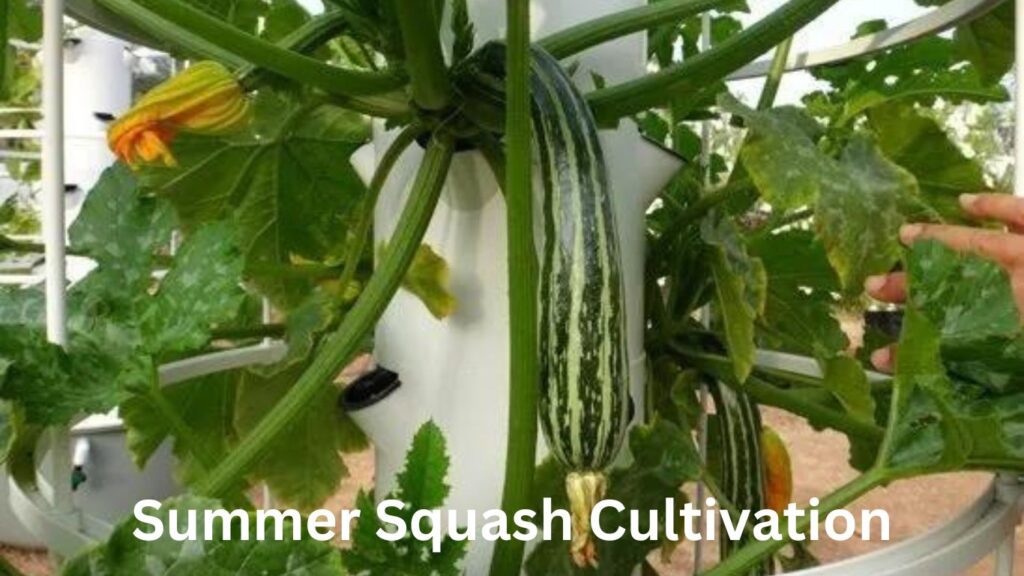
- Avoid letting the squash become overripe. Overripe squash tends to have a tougher texture, larger seeds, and a less desirable flavor. Once the squash reaches its mature size, it’s best to harvest promptly.
- Avoiding overripening in summer squash is essential to ensure the best quality and taste. Overripe summer squash tends to develop a tougher texture, larger seeds, and a less appealing flavor. To prevent overripening, it is crucial to harvest the squash when they are still young and tender, usually at a size of 6 to 8 inches. Regularly check the plants for mature squash, and harvest promptly to encourage continuous production. Allowing squash to remain on the plant for too long may signal to the plant that its reproductive purpose has been fulfilled, potentially slowing down or halting further production. Proper harvesting, combined with timely refrigeration and storage, helps maintain the freshness and optimal characteristics of summer squash, ensuring a more enjoyable culinary experience.
Size Variations by Variety of Summer Squash:
- Keep in mind that different varieties of summer squash may have different optimal sizes for harvesting. Check the specific recommendations for the variety you are growing, as some may be best when smaller, while others can be harvested at a larger size.
- Summer squash comes in various shapes and sizes, and each variety has its unique characteristics when it comes to the ideal harvesting size. For instance, zucchini is often best when picked young, around 6 to 8 inches in length, to ensure a tender texture and delicate flavor. On the other hand, pattypan squash may be harvested at a smaller size for a more delicate taste and softer consistency. Yellow crookneck and straight neck squash, while typically picked on the smaller side, can tolerate a slightly larger size without compromising quality. It’s important for growers to familiarize themselves with the specific characteristics of the summer squash varieties they cultivate, as this knowledge helps optimize the harvest timing, ensuring the best possible culinary experience with each unique type of squash.
Watch for Signs of Maturity for Summer Squash:
- Pay attention to visual cues on the squash itself. If the skin starts to become glossy, the seeds are visible, or the squash feels firm but not rock-hard, it’s likely at its peak for harvesting.
- Watching for signs of maturity in summer squash is crucial for harvesting at the peak of flavor and texture. As the squash develops, visual cues become apparent. Look for a glossy skin, indicating the optimal time for harvest. Additionally, if the seeds are visible but still small, and the squash feels firm yet not overly hard, it is likely at its prime for picking. Monitoring these signs helps ensure that the squash is tender and flavorful, providing a more enjoyable culinary experience. Harvesting at the right stage not only enhances the quality of the vegetable but also encourages the plant to continue producing more, promoting a bountiful and sustained harvest throughout the growing season.
Handle with Care for Summer Squash:
- When harvesting, use a sharp knife or pruning shears to cut the squash from the plant, leaving a short stem attached. Handle the squash gently to avoid bruising or damaging the plant.
- Handle with care when harvesting and storing summer squash to ensure the best quality and flavor. When picking the squash from the plant, use a sharp knife or pruning shears to make clean cuts, leaving a short stem attached. Handling the squash gently helps prevent bruising and damage to the plant. Additionally, store the harvested summer squash in the refrigerator in a perforated plastic bag to maintain freshness. Avoid washing the squash before storing, as excess moisture can lead to quicker spoilage. Regularly check stored squash for any signs of soft spots, mold, or deterioration, and promptly remove any affected pieces to prevent the spread of issues to nearby squash. By taking these precautions, you’ll enjoy the delicate texture and delicious taste of summer squash at its peak.
Experiment of Summer Squash:
- In the early stages of harvesting, you might want to experiment by harvesting a few squash at different sizes to see which size you prefer for eating. This can also help you determine the ideal size for your specific taste preferences.
- “Experiment with Care” summer squash refers to the intentional and thoughtful exploration of harvesting various sizes of this versatile vegetable. As gardening enthusiasts cultivate their summer squash varieties, they carefully observe the development of the fruits, selecting specimens at different stages of maturity to assess flavor, texture, and overall quality. This approach involves a deliberate and attentive process, allowing growers to discern the ideal size that suits their culinary preferences. By experimenting with care, individuals gain a nuanced understanding of how the harvest size influences the sensory attributes of summer squash, enabling them to make informed choices for future harvests. Such experimentation underscores the joy of hands-on cultivation and the satisfaction of tailoring one’s harvest to personal taste preferences.
By selecting the right size for harvesting summer squash, you’ll enjoy a more flavorful and tender vegetable, and your plants will likely continue to produce abundant crops throughout the growing season.
Inspect the Summer Squash: Look for vibrant color, firm texture, and a glossy appearance.
- Examine the squash before harvesting. Look for vibrant color, firm texture, and a glossy appearance. Avoid harvesting squash that has blemishes, soft spots, or signs of decay.
- Inspecting the squash before and after harvesting is a crucial step in ensuring the quality and freshness of the produce. Before harvesting, visually examine the squash for signs of maturity, such as a glossy skin and firm texture. Check for any visual cues, like visible seeds or changes in color, that indicate optimal ripeness. When harvesting, use a sharp knife or pruning shears to cut the squash from the plant, leaving a short stem attached. After harvest, inspect each squash carefully for any damage, soft spots, or signs of mold. Remove any damaged or overripe squash to prevent the spread of spoilage to the remaining harvest. Regular inspection helps in maintaining the overall health of the plants, encourages continuous production, and ensures that only the freshest and highest-quality squash makes its way to your table.
Use Sharp Tools Summer Squash: Use a sharp knife, pruning shears, or scissors for harvesting.
- Use a sharp knife, pruning shears, or scissors for harvesting. This helps in making clean cuts without causing damage to the plant.
- When harvesting summer squash, it is imperative to use sharp tools for a clean and precise cut. Sharp knives or pruning shears help minimize damage to the plant and reduce the risk of introducing diseases or causing unnecessary stress. A clean cut promotes faster healing of the stem, allowing the plant to channel its energy into producing new fruits. Additionally, a sharp tool ensures that the squash is harvested at the ideal size, typically when it is young and tender, enhancing its flavor and texture. By employing sharp instruments, gardeners can efficiently harvest summer squash while maintaining the overall health and productivity of their plants.
Cutting Technique Hold the squash in one hand and carefully:
- Hold the squash in one hand and carefully cut the stem using your tool of choice. Leave a short stem attached to the squash; this helps in preserving the squash’s freshness.
- When employing the cutting technique for summer squash, it is essential to use a sharp knife or pruning shears to ensure clean and precise cuts. The goal is to harvest the squash with minimal damage to the plant. Hold the squash gently in one hand while carefully cutting the stem with the other, leaving a short piece of stem attached to the fruit. This not only aids in preserving the plant’s overall health but also helps maintain the quality of the harvested squash. By utilizing a steady hand and a sharp tool, you can efficiently harvest summer squash at the right size—typically when they are young and tender, around 6 to 8 inches in length—ensuring a flavorful and enjoyable culinary experience.
Harvest Regularly:
- Check your squash plants regularly, at least every 1-2 days during peak growing season. Summer squash plants can produce rapidly, and regular harvesting encourages continuous production.
Harvest in the Morning:
- If possible, harvest summer squash in the morning. At this time, the squash is likely to be the most hydrated, and the temperatures are cooler.
Avoid Bruising:
- Handle the harvested squash with care to avoid bruising. Rough handling can lead to bruised or damaged skin, reducing the quality of the squash.
Remove Overgrown Squash or oversized squash from the plant:
- Remove any overgrown or oversized squash from the plant. Leaving large squash on the plant signals to the plant that it has fulfilled its purpose, potentially slowing down further production.
- When dealing with overgrown summer squash, it’s essential to promptly address the situation to maintain the overall health of the plant and salvage any usable portions of the vegetable. Overgrown squash, characterized by its larger size and tougher texture, may not be as desirable for immediate consumption. However, rather than discarding these oversized specimens, consider repurposing them in various culinary applications. Grating overgrown squash for baking, incorporating it into soups, stews, or casseroles, or utilizing it in pickling are viable options to make the most of the harvest. By removing overgrown squash promptly, the plant can redirect its energy towards producing new, tender fruits, ensuring a continued abundance of flavorful summer squash throughout the growing season.
Check Under Leaves Inspect the plant thoroughly:
- Inspect the plant thoroughly, including under large leaves where squash might be hidden from view.
- Checking under leaves is an essential practice when cultivating summer squash. The undersides of the leaves often conceal the early stages of pest infestations, such as squash bugs, aphids, or caterpillars, which can significantly impact the health and productivity of the plants. Additionally, inspecting beneath the foliage allows you to spot young squash that might be hidden from plain view. Harvesting these hidden gems at the right size ensures a tender and flavorful yield. Regularly checking under leaves not only aids in pest management but also contributes to a more efficient and successful summer squash harvest.
Harvest gardeners harvest male squash flowers for culinary use:
- Some gardeners harvest male squash flowers for culinary use. These can be picked early in the morning when they are open and can be stuffed, battered, or used in various recipes.
- Harvesting male flowers from summer squash plants is a common practice among gardeners seeking to diversify their culinary experiences. Male flowers are identifiable by their slender stems and lack of a swelling at their base, which is the embryonic fruit that distinguishes female flowers. Harvesting these male blooms allows for the culinary exploration of their delicate and mildly sweet flavor. While female flowers typically develop into the familiar squash, male flowers offer a unique culinary opportunity. To harvest, gently pluck the male flowers, leaving a short stem attached. These blossoms can be enjoyed in various ways, from being lightly battered and fried to becoming a flavorful addition to salads or a delicate stuffing for a gourmet twist in the kitchen. The ephemeral nature of these blossoms makes the timing of their harvest crucial, providing a brief window of opportunity to savor their culinary potential.
Remember that the more you harvest, the more productive your summer squash plants are likely to be. Harvesting at the right stage ensures that you enjoy the best flavor and texture from your homegrown squash.
Storing Proper storage of summer squash is crucial to maintaining its freshness:

Proper storage of summer squash is crucial to maintaining its freshness, flavor, and texture. Here are some tips on how to store summer squash:
Storing summer squash properly is essential to preserve its freshness and flavor. Once harvested, it is advisable to refrigerate summer squash promptly to slow down the ripening process. Place the unwashed squash in the vegetable crisper drawer, ideally in a perforated plastic bag to provide ventilation without excessive moisture. Regularly check the stored squash for any signs of spoilage, promptly removing any that show soft spots or mold.
Here’s a table outlining key considerations for cultivating summer squash hydroponically:
Table: Summer Squash Hydroponic Cultivation
| Considerations | Details |
|---|---|
| Varieties Suitable for Hydroponics | Zucchini, Yellow Squash, Pattypan Squash |
| Hydroponic System | Nutrient Film Technique (NFT), Deep Water Culture (DWC), Drip System |
| Growing Medium | Coconut Coir, Perlite, Vermiculite, or a mix of these |
| pH Range | 6.0 – 6.8 (slightly acidic to neutral) |
| Temperature Range | 70°F – 85°F (21°C – 29°C) |
| Lighting Requirements | Full-spectrum LED or HID lights; 12-16 hours/day |
| Nutrient Solution | Balanced hydroponic nutrient solution, rich in potassium and phosphorus |
| Pollination | Hand pollination may be necessary; gently shake flowers or use a small brush |
| Support Structures | Trellis or vertical gardening systems to support the weight of growing fruit |
| Pruning | Regular pruning to manage plant size and encourage air circulation |
| Harvesting | Harvest when fruits are young and tender; regularly pick to encourage more fruiting |
| Pest and Disease Control | Monitor for common pests (aphids, mites) and diseases (powdery mildew); use organic insecticides and fungicides as needed |
| Training | Train vines to grow vertically for efficient use of space; provide proper support |
| Spacing | Follow recommended spacing for the chosen hydroponic system; allow space for vertical growth |
| Watering Schedule | Maintain a consistent watering schedule; avoid overwatering to prevent root diseases |
| Growth Duration | 50-65 days from planting to harvest, depending on the variety and growing conditions |
This table provides a concise overview of the key factors to consider when growing summer squash hydroponically. Remember that successful cultivation may require adjustments based on the specific hydroponic system, environmental conditions, and the chosen variety of summer squash. Regular monitoring and adaptation to the needs of the plants are crucial for a productive hydroponic squash garden.
Refrigeration:
- Store summer squash in the refrigerator to slow down the ripening process. Place them in the vegetable crisper drawer, unwashed, in a perforated plastic bag. The perforations allow for some ventilation while retaining humidity.
Avoid Moisture:
Do not wash the squash before storing, as excess moisture can lead to quicker spoilage. Instead, wash them just before use.
Separate Varieties:
- If storing different varieties of summer squash, separate them. Different types may have slightly different storage requirements, and keeping them separate can prevent cross-flavoring.
- Check Regularly:
- Check stored squash regularly for any signs of spoilage. Remove any squashes that show soft spots, mold, or other signs of deterioration to prevent them from affecting nearby squash.
Short-Term Storage:
- For short-term storage (up to a week), keeping summer squash in the refrigerator is usually sufficient.
Long-Term Storage:
- If you have a surplus of summer squash, consider blanching and freezing them for longer storage. Cut the squash into slices or cubes, blanch in boiling water for 2-3 minutes, cool quickly in ice water, drain, and then freeze in airtight containers or freezer bags.
Preservation Methods:
- Explore preservation methods such as pickling, canning, or making relishes and chutneys to extend the shelf life of your summer squash.
Cool and Dark Storage:
- If you have a cool, dark storage area like a cellar, you can store squash for a short period. Ensure good air circulation to prevent mold.
Use the Most Mature First:
- If you have harvested squash at different stages of maturity, use the most mature ones first, as they tend to have a shorter shelf life.
Repurpose Overgrown Squash:
- If you accidentally let some squash become overgrown, you can still use them. While they may not be as tender as younger squash, they can be grated and used in baking or added to soups and stews.
By following these storage tips, you can maximize the shelf life of your summer squash, keeping them fresh and delicious until you’re ready to use them.
Tips For Summer Squash By following these guidelines:
- Harvest Early: Summer squash should be harvested when young; larger squash tends to have tougher skin and seeds.
- Consistent Harvesting: Regular harvesting promotes plant productivity. If you leave overgrown squash on the plant, it can signal the plant to slow down production.
- Pest and Disease Control: Keep an eye out for pests and diseases, as they can affect the quality of your harvest.
- Companion Planting: Planting companion plants like marigolds and nasturtiums can help deter pests.
By following these guidelines, you can enjoy a bountiful harvest of fresh and flavorful summer squash throughout the growing season.
When is the best time to harvest fruits and vegetables?
The best time to harvest fruits and vegetables varies depending on the specific crop, but generally, it is recommended to harvest fruits and vegetables when they are ripe and fully mature.
How can I determine if a fruit or vegetable is ready to be harvested?
There are several ways to determine if a fruit or vegetable is ready to be harvested. These include checking for desired color, size, texture, and taste. Some crops also have specific indicators of readiness, such as the ease of separation from the plant or the drying of the stem.
What is the proper technique for harvesting fruits and vegetables?
The proper technique for harvesting fruits and vegetables may vary depending on the crop, but in general, it is important to use sharp and clean tools to avoid damage to the plant. It is also recommended to handle the produce carefully to prevent bruising or other physical injuries. Additionally, it is essential to follow any specific instructions for each crop to ensure optimal harvesting.
How should I store harvested fruits and vegetables?
Proper storage techniques for harvested fruits and vegetables also vary depending on the specific crop. However, some general guidelines include removing any damaged or spoiled produce to prevent the spread of decay, storing produce in a cool and well-ventilated area, and avoiding excessive moisture or direct sunlight. Some crops may require specific storage conditions, such as refrigeration or humidity control.
How long can harvested fruits and vegetables be stored?
The storage life of harvested fruits and vegetables can vary significantly depending on the crop, environmental conditions, and storage techniques. Some produce can be stored for a few days, while others can last for several weeks or even months. It is important to regularly inspect stored produce and remove any spoiled items to prevent the spread of decay.
Can I store different types of fruits and vegetables together?
It is generally recommended to avoid storing different types of fruits and vegetables together, as some produce can release ethylene gas, which can accelerate the ripening and deterioration of other crops. However, there are exceptions where certain fruits and vegetables can be stored together without adverse effects. It is best to research and follow specific storage recommendations for each crop.
How can I extend the shelf life of harvested fruits and vegetables?
To extend the shelf life of harvested fruits and vegetables, it is important to handle them with care during harvesting and storage. Properly washing, drying, and packaging produce can help prevent the growth of bacteria and fungi. Additionally, utilizing appropriate storage techniques, such as refrigeration, humidity control, or storing in root cellars, can also help prolong the freshness of harvested crops.
Are there any natural methods to prevent spoilage during storage?
Yes, there are several natural methods to prevent spoilage during storage. For example, storing certain fruits and vegetables with ethylene-absorbing materials, such as activated charcoal or zeolite, can help reduce the effects of ethylene gas. Additionally, some crops benefit from storing them with specific companion plants or using natural techniques like vinegar or citrus sprays to inhibit mold or bacterial growth.
Can I freeze harvested fruits and vegetables for long-term storage?
Freezing can be an effective method for long-term storage of many fruits and vegetables. However, not all crops are suitable for freezing, as some may lose their texture or taste after thawing. It is important to research the specific freezing guidelines for each crop, including proper packaging and blanching techniques, to maintain the best quality during storage.
What are the signs that indicate fruits and vegetables are no longer suitable for consumption?
Signs that indicate fruits and vegetables are no longer suitable for consumption include mold growth, significant softening or wrinkling, foul odor, discoloration, and an overall slimy or mushy texture. It is crucial to regularly inspect stored produce and discard any items showing these signs to prevent the consumption of spoiled or potentially harmful food.


